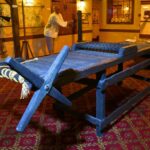Strong surfaces begin with steady layers that spread load without drift or sink. Paths carry weight day after day so the base must resist movement. Careful choices cut waste while raising life span for every section. Map the route with clear widths, then match depth to purpose. Shape edges for tidy lines so soil does not creep into the course. Keep water moving away from weak spots to stop soft patches. Choose tools that fit the task so progress stays smooth from start to finish.
Ground Basics
Begin with a reading of soil type, then set the build to match. Clay needs firm support, while sand seeks interlock that holds each grain in place. A blended base forms a platform that keeps the top from rutting. Use gravel grids where loose stone needs structure so tracks remain level. The honeycomb-style cell limits spread so the load reaches a wider zone below. Add a nonwovenlayer under the base to stop fines from rising. Compact in thin lifts with patient passes until the plate makes a bright ring.
Load Planning
Good layouts reflect weight limits purpose cycles plus climate swings across the year. Read the notes first, then apply each point with quiet focus during setup.
- Measure span with a straight line so curves flow without tight sudden bends
- Mark depth targets at short gaps to keep layers uniform along the route
- Set edge restraints that lock borders so stone does not walk outward
- Choose base size after soil tests since weak ground needs thicker lifts
- Allow access zones for service vehicles so corners never crush under strain
- Break long runs with control joints where turns or slopes change direction
- Keep stockpiles off the line so soft ground does not dish before work
Soil Behavior
Each soil holds water at a different rate so drainage must watch reality. Clay swells with wet days and then shrinks after sun so joints need room. Silt moves easily so filter fabric helps capture fines below the base. Sand drains fast yet shifts under point load so confinement gives strength. Mixed ground needs staged proof rolling before full depth begins across the site. If peat or fill lies near the top; remove to firm the subgrade before you build. A penetrometer reading tells more than a glance so test many spots, not one.
Drainage Design
Water control protects strength across seasons since trapped moisture weakens every layer. Use these points to guide details that keep the base dry and sound.
- Pitch surfaces with a gentle fall so puddles never sit after rain
- Carry flow to stone trenches beside edges that discharge to safe ground
- Wrap pipes with fabric sleeves so fines stay out while water moves freely
- Place clean stone around the line so voids remain open during storms
- Guide roof runoff away from edges so surcharge does not saturate borders
- Lift grids slightly above soft verges so splash does not settle in cells
- Inspect outlets monthly after heavy weather so clogs never build unseen
Material Options
Select parts that match budget life target service load plus upkeep time. The short note below sets context for choices, and then the points give direction.
- Crushed rock with angular faces locks tightly, which improves shear resistance
- Well-graded blends reduce voids so settlement stays low during service life
- Recycled stone suits many bases where quality control confirms stable mix
- Cement-bound layers add stiffness where clay heave causes long-wave movement
- Geocells confine fill on slopes which resists creep under repeated loading
- Stabilizing fabric separates layers so fines do not migrate into the base.
- Surface stone size should fit grid cells so panels stay flat and quiet
Build Sequence
Set the line with string, then cut to depth with tidy shoulders. Proof-roll the subgrade so weak spots show before the next step begins. Add separation fabric with small overlaps that face downslope. Place base in thin lifts, not thick piles so compaction reaches full depth. Compact slowly with crossing passes until the plate leaves a firm buzz. Lay grids over a level mat then fill to the brim before moving on. Seat surface stone with one light pass to settle pieces without crushing edges.
Quality Checks
Simple checks reduce rework while raising the life of the finished run across seasons. Use these notes to shape a routine that supports clean outcomes on every job.
- Test thickness at random points so no bay leaves the target by big margins
- Confirm density with a field gauge so layers meet the compaction target
- Tap grid joins to ensure clips seat fully with no wobble at joints
- Brush fibers from fabric before covering since dust can hold water inside
- Check falls with a long straight edge so flow stays steady to outlets
- Verify edge restraints stay plumb since lean invites stone creep over time
- Photograph stages with date marks which helps later service decisions on site
Care Schedule
Ongoing upkeep protects value through wet winters dry spells plus frequent use. Build a simple plan that fits your site, then follow it with calm steps.
- Sweep surface stone back to bays so lines remain full without bare patches
- Rake displacement after heavy events so levels return to the original grade
- Flush drains with clean water during change of season to clear hidden silt
- Pull weeds early along borders since roots can pry at the restraint
- Top up stone where tires polish corners so texture returns for better grip
- Inspect grids near turns for lifted lids then refill cells to the brim
- Log dates tasks weather notes so patterns guide smart upkeep across years
Strong Ground Wins
Lasting strength arrives through sound study careful layout measured lifts plus neat checks. Focus on soil limits before you pick layers since that choice decides success. Build drainage that moves water away fast so the base stays firm. Use grids where stone needs support across soft subgrade or on slopes. Document each stage with simple photos so later work stays informed. Keep a light routine of care so small shifts never grow into damage. For broad paths or loaded bays, choose a stable blend, then confirm depth with tests. Finally store spare clips and a short tool kit near the route for quick fixes.
Solid Outcomes
Reliable routes grow from clear study smart materials tidy work, and steady care. Shape choices around true ground conditions, then scale depth to match use. Move water quickly with pitched faces plus clean outlets that stay open. Install gravel grids where confinement turns loose stone into a calm bearing layer. Record observations, then adjust the plan as seasons reveal subtle change. Small habits keep surfaces even so service life stretches far without strain.






